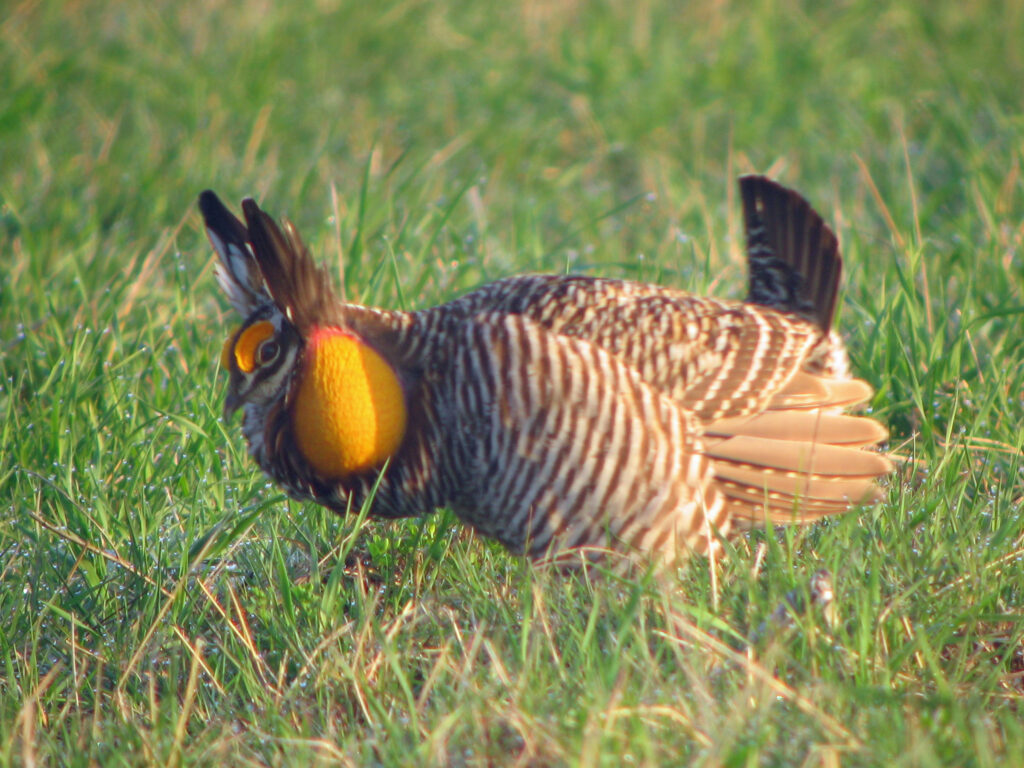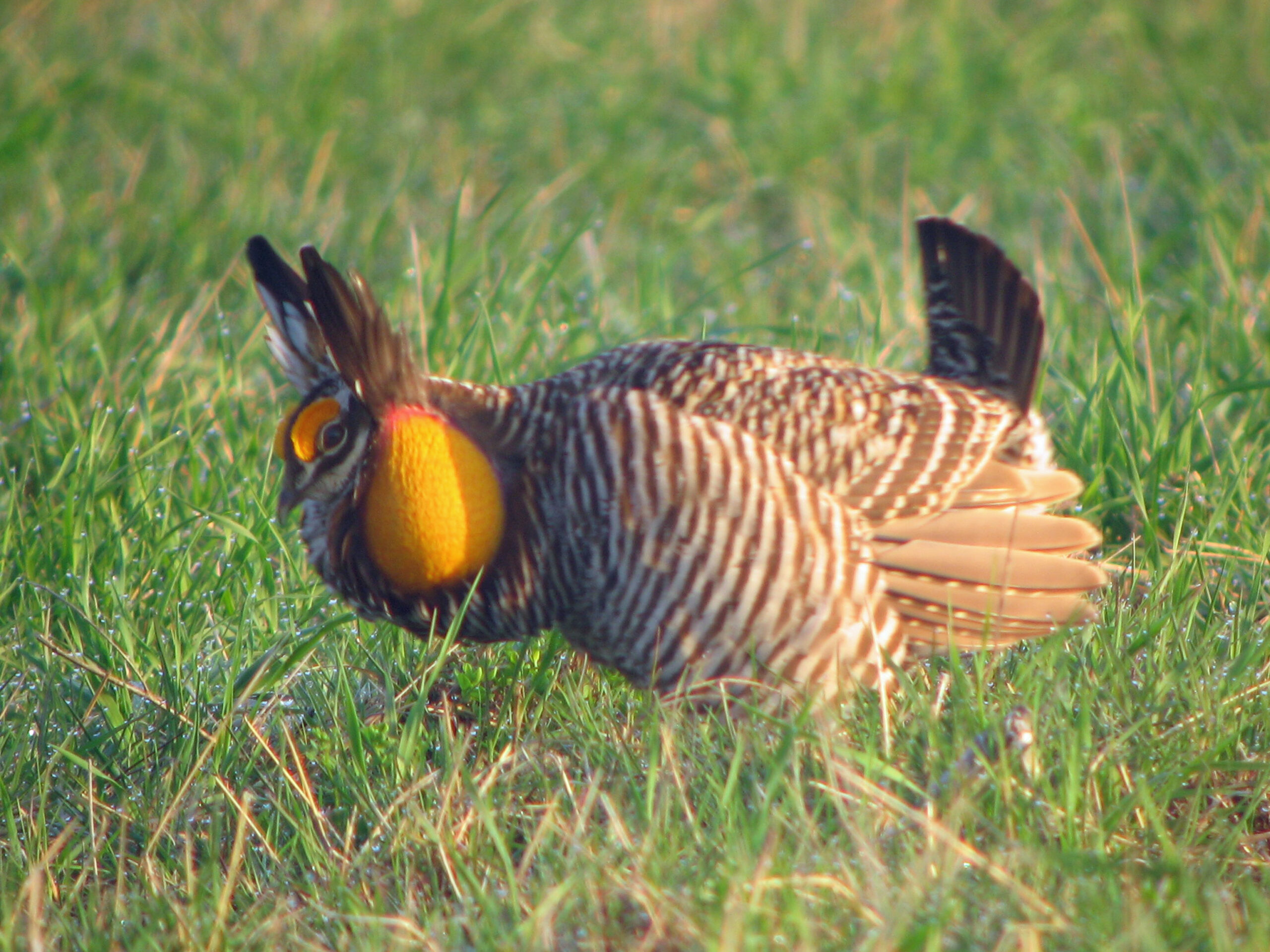ANIMAL: Greater Prairie Chicken Tympanuchus cupido Type of Animal: Gamebird Habitat: Open expanses of short cover, burned areas, cropland, prairie, agricultural land/cropland mixed w/ prairie, grassland, forb/mixed grass-forb habitats, disturbed areas w/ ample food, oak woodland intermixed w/ prairie, dense brush patches, open elevated flat areas, savanna, coastal plains Location(s): Formerly found in S Canada (S Alberta, S Saskatchewan, S Manitoba, S Ontario) & C & Midwest US as well as in extreme NE Tamaulipas in Mexico. Currently found in pockets of C & Midwest US & S Canada. Appearance: Stocky medium-large chicken-like bird w/ short rounded tails. Cocks larger w/ orange to yellow-orange comb-like feathers over eyes & dark elongated head feathers, orange circular un-feathered neck patch. Hens smaller w/ shorter head feathers, lacking neck patch/comb Food/Diet: Leaves, seeds, buds, acorns, fruit, grasses, greens, grains, berries, insects, insect larvae, spiders Status in Wild: Stable Conservation: Reintroductions/repopulation into parts of former & current range. Lifestyle: Flocks of 10-200 birds. Males gather in leks (breeding aggregations) during breeding season. Hens raise chicks on their own, sometimes joining other hens & chicks. Additional Info: Called: Male: Cock/Boomer Female: Hen Young: Chick Group: Flock Weight: Male: 2.25 lbs Female: 2 lbs Gestation: 1 month Life Span: 2-5 years Height: Male: 1.5 ft Female: 1.46 ft Body Length: 1.4 ft, same for both sexes Tail Length: Male: 0.5 in Female: 0.4 in Main predators of adults are raptors, bobcats, coyotes, foxes, & badgers. Snakes, raccoons, skunks, crows, rats, opossums, & ground squirrels prey on chicks. These grouse almost went extinct in 1930s due to habitat loss & overhunting. These large grouse often compete w/ ring-necked pheasants, who disrupt them at breeding sites & parasitize nests. Males called boomers due to deep booming sound made during breeding season. Besides booming, males jump & flutter at each other. Fights tend to be ritualized. Males strut/dance/call to hens. Prior to booming, males inflate throat sac & lower wings. Breed from late March to early June. Hens lay 5-17 eggs per clutch. Chicks become independent at 3 months. Each lekking male guards a patch of 100 square feet. Nests are shallow bowl-shaped depressions. While they spend most time on ground, they will fly into trees to gather food. Reach sexual maturity at 9-10 months. Fun Fact(s): Besides being called boomers, they’re also called pinnated grouse. Some leks/breeding grounds have been in use for more than a century. These birds nonmigratory & dig into the snow, creating horizontal tunnels for themselves. These birds have high mortality rates-50-60% of adults in given area die each year.

